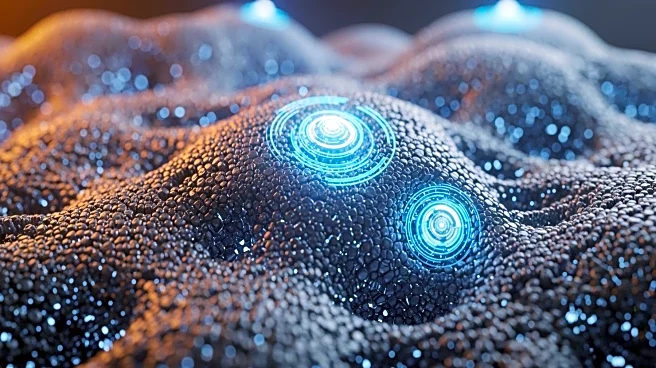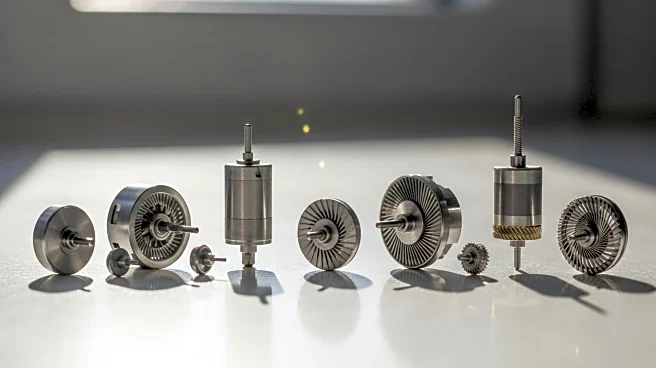What is the story about?
What's Happening?
Researchers have made a groundbreaking discovery in the field of quantum computing by identifying phasons in twisted two-dimensional (2D) materials. Using electron ptychography, scientists have directly imaged phasons in tungsten diselenide, a 2D material. This discovery reveals how atomic vibrations, known as phasons, vary with atomic arrangement, providing the most accurate images of individual atoms ever recorded. Phasons, a type of atomic vibration, play a crucial role in thermal vibrations in low-angle twisted bilayers, influencing heat transfer in these materials. The research highlights the potential to control heat in 2D materials at the atomic level, which could lead to advancements in electronics and quantum computing.
Why It's Important?
The discovery of phasons in twisted 2D materials is significant for the future of electronics and quantum computing. By understanding and controlling atomic vibrations, scientists can develop materials that manage heat more efficiently, potentially leading to faster and smaller electronic devices. This breakthrough could revolutionize the design of electronics, making them more efficient and capable of handling higher computational loads. The ability to observe and manipulate atomic-level heat transfer opens new avenues for research and development in material science and technology.
What's Next?
The findings pave the way for further exploration of 2D materials and their applications in quantum computing. Researchers will likely focus on developing methods to control phasons and harness their properties for practical applications. This could involve creating new materials with tailored thermal and electronic properties, enhancing the performance of electronic devices. The study also sets the stage for future research into the fundamental properties of 2D materials and their potential uses in various technological fields.
AI Generated Content
Do you find this article useful?













